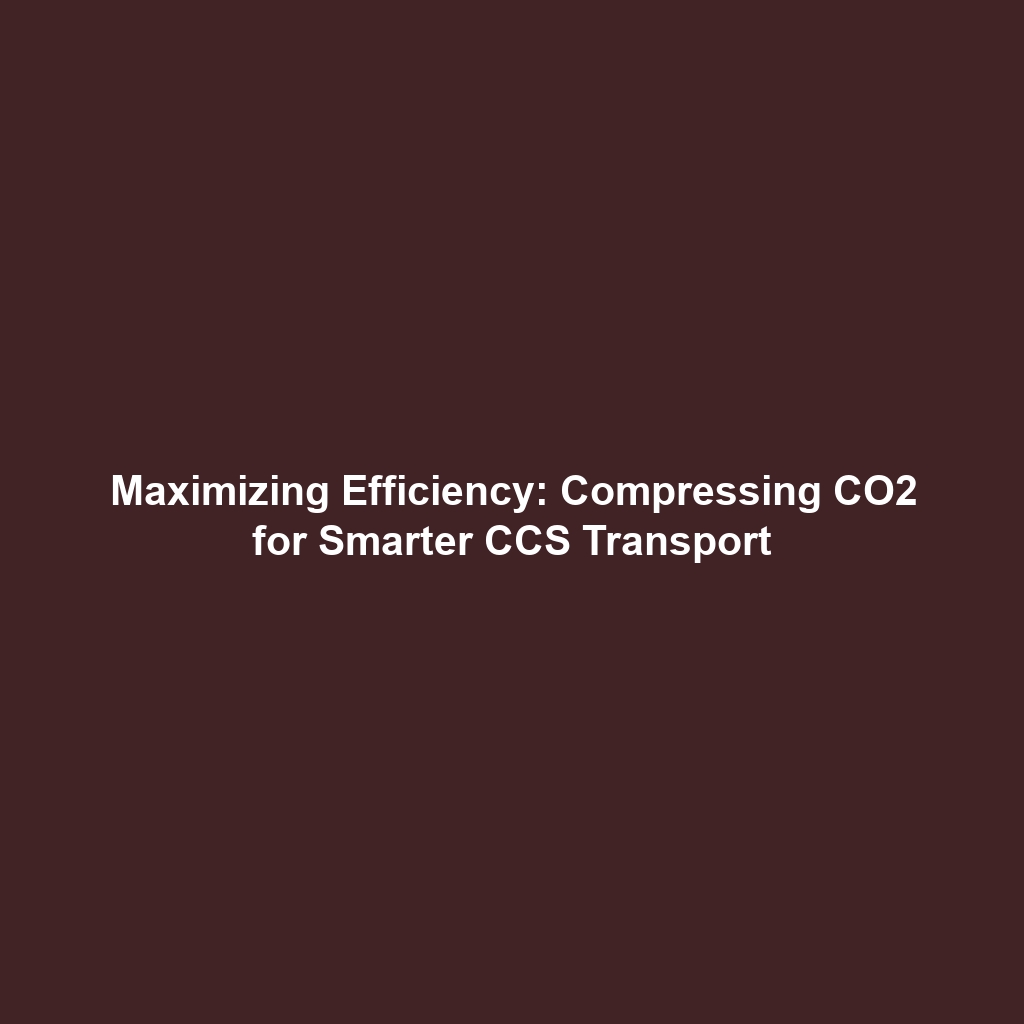CO2 Compression for Efficient Carbon Capture & Storage (CCS)
Category: Carbon Capture & Storage (CCS)
Topic: Before transport, CO2 must be compressed to a high-pressure, supercritical state, reducing its volume for more efficient transportation.
Introduction
Before transport, CO2 must be compressed to a high-pressure, supercritical state, which is crucial for the efficient transportation of captured carbon. This process greatly reduces the volume of CO2, making it feasible to transport large quantities over long distances. In the broader context of Carbon Capture & Storage (CCS), understanding how to effectively manage CO2 is vital for reducing greenhouse gas emissions and combating climate change. Current advancements in CO2 compression technology play a significant role in enhancing the viability of CCS systems globally.
Key Concepts
What is Supercritical CO2?
Supercritical carbon dioxide (scCO2) is a state of carbon dioxide that occurs when it is subjected to pressures exceeding 73.8 atmospheres and temperatures above 31.1°C (88°F). In this state, CO2 exhibits unique properties, allowing it to behave both like a gas and a liquid. The compression of CO2 into a supercritical state is a critical step in the CCS process as it maximizes the amount of CO2 that can be stored or transported in a given volume, leading to:
- Significant reductions in transportation costs.
- Enhanced storage efficiency.
- Optimized pipeline operations.
Applications and Real-World Uses
The compression of CO2 into a supercritical state has several vital applications within Carbon Capture & Storage (CCS). Here are prominent examples:
- Pipeline Transportation: scCO2 can be efficiently transported via pipelines over hundreds of miles, essential for linking capture sites to storage facilities.
- Enhanced Oil Recovery (EOR): Supercritical CO2 is used in EOR processes to increase oil extraction efficiency from aging reservoirs.
- Geological Storage: Utilization of supercritical CO2 for long-term storage in underground geological formations, ensuring reduced atmospheric emissions.
Current Challenges
While the compression of CO2 is pivotal for Carbon Capture & Storage (CCS), several challenges persist:
- Energy Demand: The energy consumption required for CO2 compression can offset some of the environmental benefits.
- Material Integrity: Long-term exposure to high-pressure conditions may affect the integrity of transport pipelines.
- Regulatory Issues: Variability in regulations around the storage and transport of supercritical CO2 may hinder widespread implementation.
Future Research and Innovations
Innovations in CO2 compression technology are underway, focusing on improving efficiency and reducing costs. Future research may include:
- Advanced Compression Technologies: Development of next-generation compressors that utilize less energy.
- Carbon Utilization: Exploring new avenues for employing captured CO2 in useful products, thus providing economic incentives for CCS.
- Monitoring and Control Systems: Innovations in data acquisition and monitoring systems to enhance the safety and efficiency of CO2 transport.
Conclusion
In summary, before transport, CO2 must be compressed to a high-pressure, supercritical state, significantly reducing its volume and optimizing the efficiency of Carbon Capture & Storage (CCS). As the process develops, overcoming existing challenges and embracing innovations could accelerate the adoption of CCS technologies worldwide. For more in-depth insights, explore related topics such as future research in CCS and its implications for climate policies.
